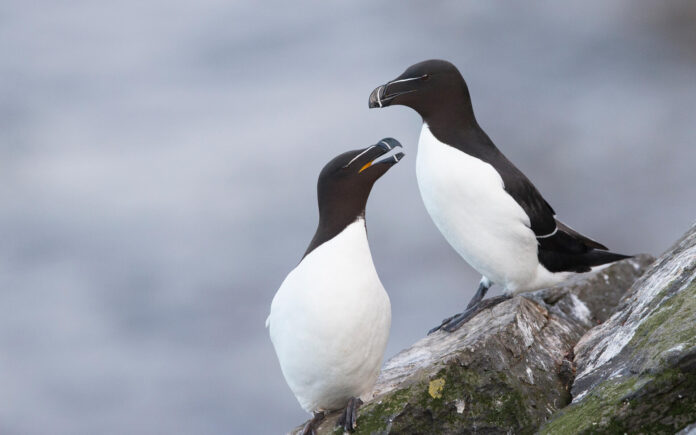Staff at the Wildlife Center of Virginia – a teaching and research hospital for native wildlife located in Waynesboro – are well-experienced when it comes to providing medical care for wild birds.
During 2022 alone, wildlife veterinarians and rehabilitators at the Center cared for nearly 1,500 avian patients including eagles, hawks, owls, falcons, and a multitude of songbirds. This week, however, a rarely-seen species was admitted to the hospital: a Razorbill, also known as a Razor-billed Auk, that was rescued in Virginia Beach on January 17.

Normally found throughout the subarctic North Atlantic Ocean, Razorbills are seabirds and are highly adapted for life within a marine environment. Agile fliers, adept divers, and expert fishers, Razorbills spent a majority of their lives at sea aside from nesting and rearing young. While not typically seen in Virginia year-round, small numbers of Razorbills have been documented migrating as far south as the Chesapeake Bay during winter months.
With striking black and white plumage and a sharp, hatchet-shaped bill, this patient’s appearance is undeniably exotic in comparison to more commonly-seen birds in the Shenandoah Valley. Its medical treatment and plan of care while at the Center will be out of the ordinary, too.
Instead of spending time in an outdoor enclosure designed for inland bird species, veterinary staff will make use of a specially designed indoor “swimming pool” to test the Razorbill’s ability to paddle and keep its feathers adequately waterproofed; instead of offering food items like seeds, berries, or insects, a diet of live fish is on the menu for this patient. Fortunately for the Razorbill, one local business has rallied to help.
The Fisherman’s Attic, a Crimora-based bait and tackle shop, has offered to supply the Center with an unlimited amount of live minnows that will be fed to the Razorbill during its time as a patient. As a non-profit organization, the Wildlife Center depends on both monetary donations and donations in-kind – including minnows, in this case – to care for the thousands of wild animals that will be cared for each year.
Staff at the Center are incredibly grateful and humbled by the generosity that’s been shown for their work. While the goal of wildlife rehabilitation is to restore wild animals to health and release them back into their natural habitats, it takes efforts from many invested people to reach that goal. From the individual who cared enough to stop and find help for an injured wild animal, to volunteer transporters, wildlife rehabilitators, veterinarians who provide medical assistance, and more – it truly “takes a village” to help a wild animal in need.
For more information about the Center and its work, and to provide a donation of your own, visit https://www.wildlifecenter.org/.

